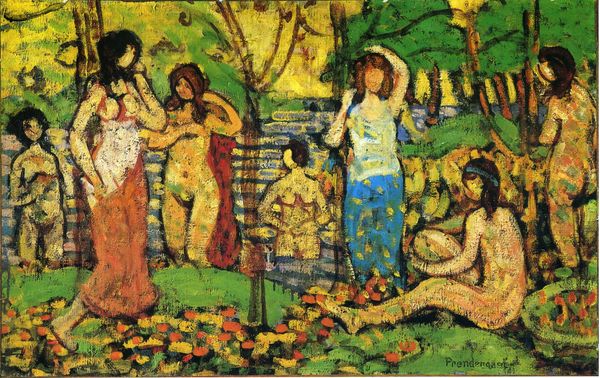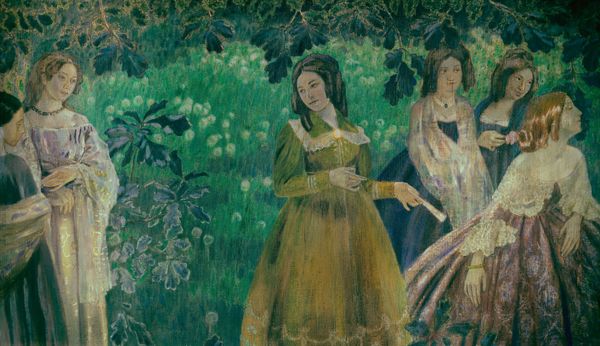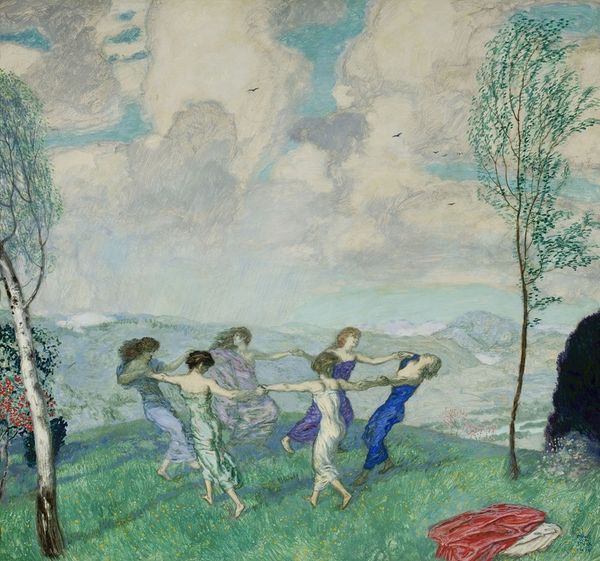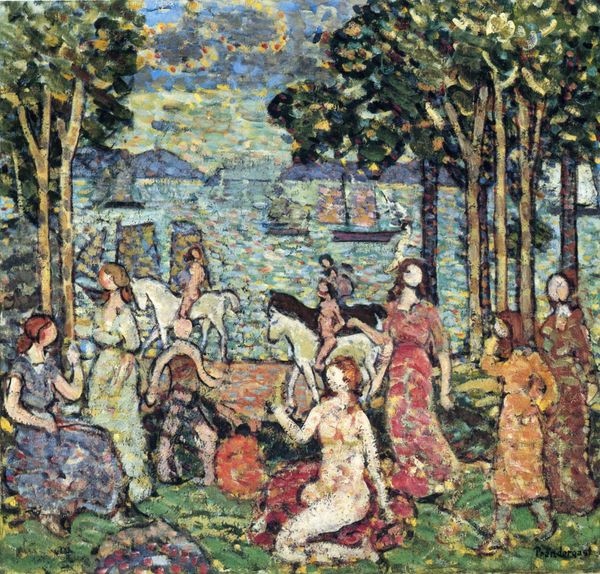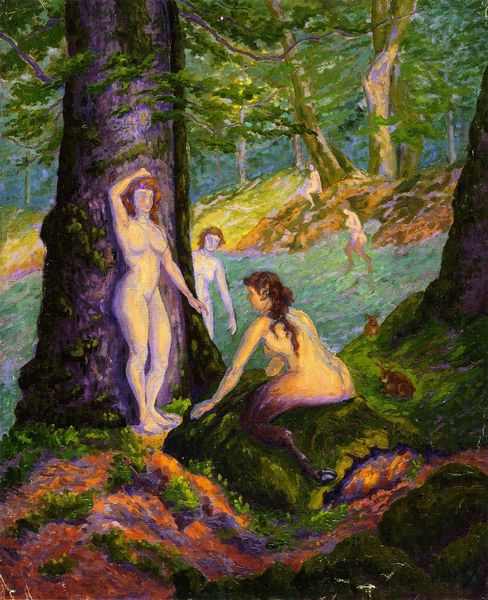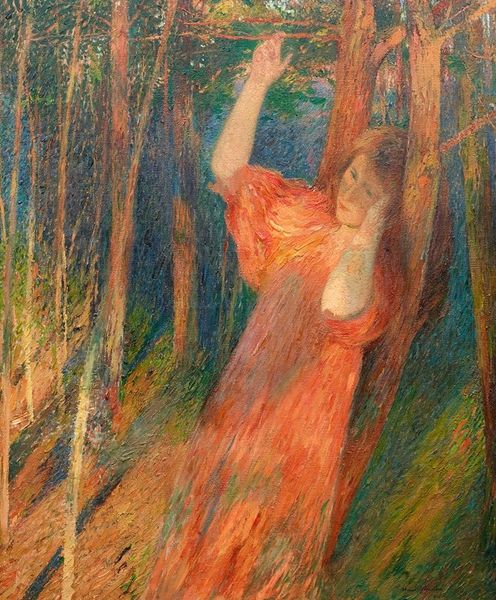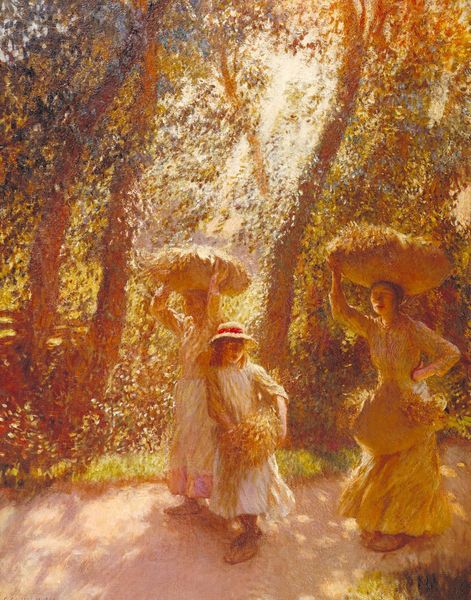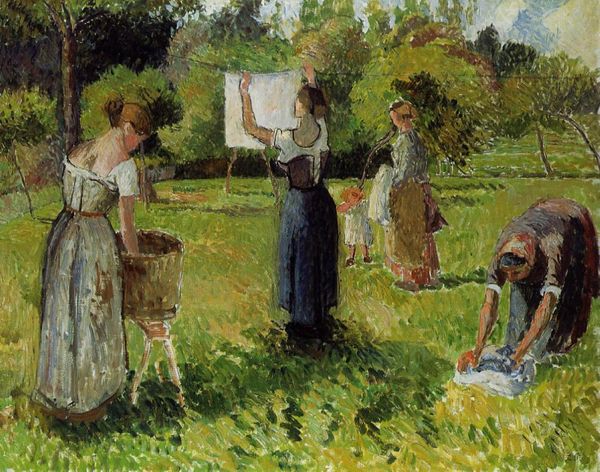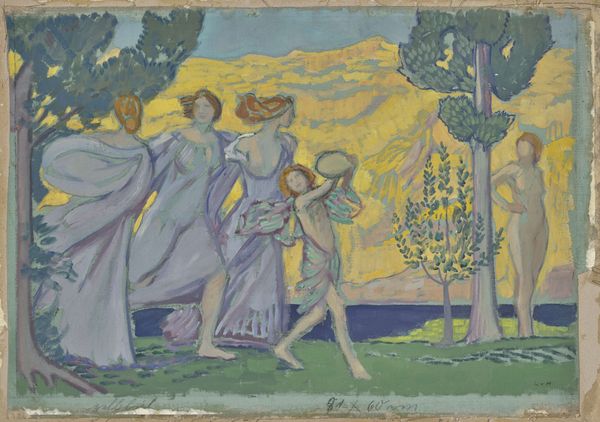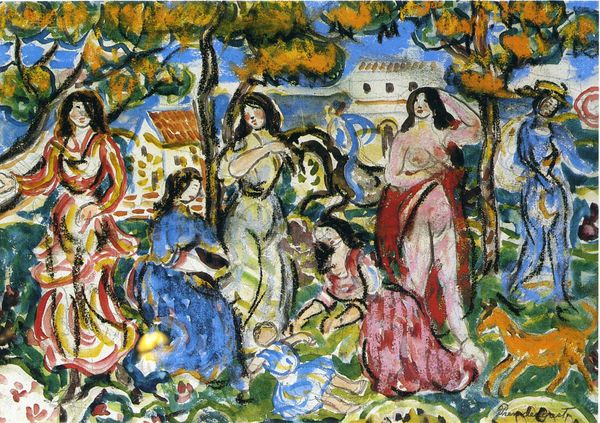
oil-paint
#
portrait
#
gouache
#
tree
#
narrative-art
#
impressionism
#
oil-paint
#
greek-and-roman-art
#
landscape
#
figuration
#
oil painting
#
roman-mythology
#
mythology
Copyright: Public domain
Henri Martin’s “Orpheus” is an oil painting, built from countless tiny dabs of pure color, a technique reminiscent of tapestry weaving. The process is meticulous, requiring immense labor to create a vibrant, shimmering surface, not unlike the effect of light through stained glass. You might even consider this approach as a kind of proto-digital pointillism, where each dot contributes to the overall image, yet retains its individual identity. Martin's pointillist technique elevates the labor-intensive process of painting itself, transforming it into a visual metaphor for craft traditions. The painting's social context is also evident in its idealized depiction of a pastoral scene, reflecting a longing for simpler times. The careful application of paint, a testament to the artist's skill and dedication, highlights the value of human effort in a rapidly industrializing world. By emphasizing the handmade quality of the work, Martin subtly critiques the mass-produced objects of his era. “Orpheus” then becomes a celebration of craftsmanship, inviting us to reconsider the relationship between art, labor, and value.
Comments
No comments
Be the first to comment and join the conversation on the ultimate creative platform.
